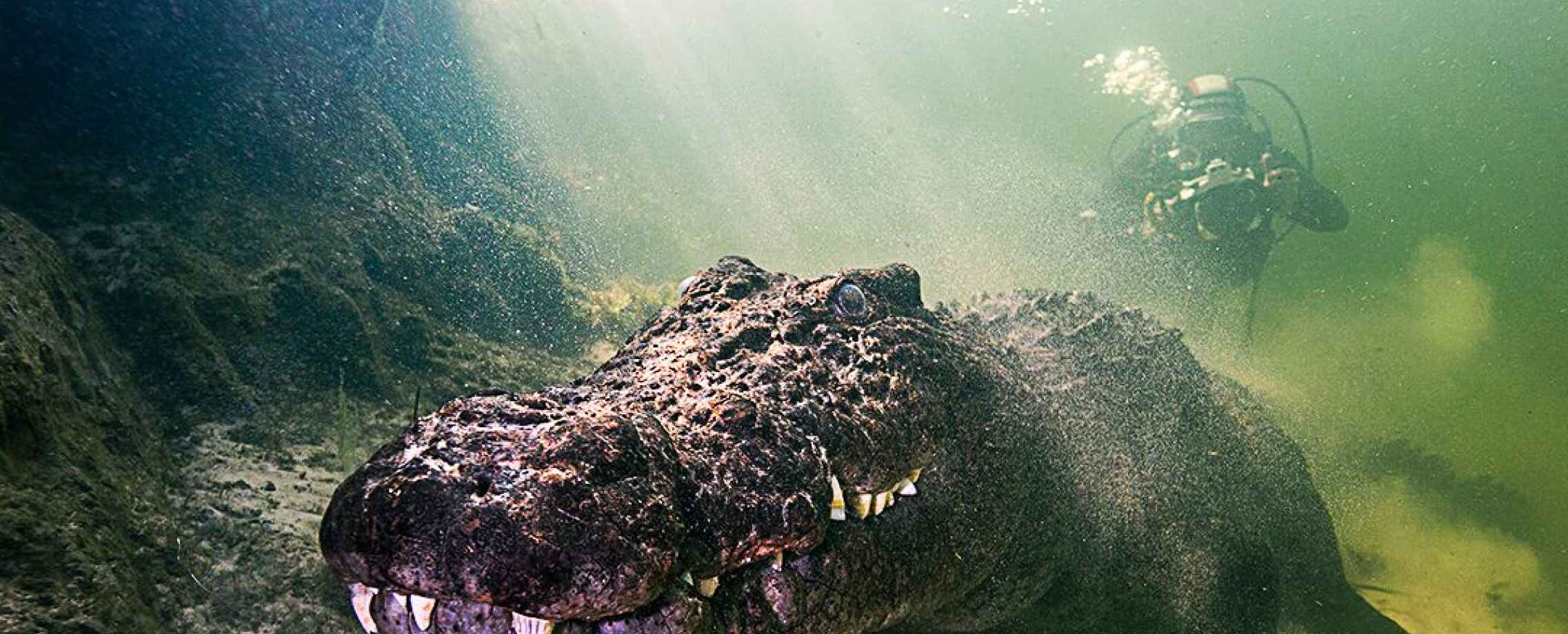
Crocodiles of Botswana
Nile crocodiles like to bask in the sun along riverbanks in the Okavango Delta. During June and July (Botswana’s winter), the water is a chilly 55-62° F, and underwater visibility is about twenty feet. These huge reptiles spend many hours every day soaking up the heat from the sun’s rays, but the moment a crocodile spots our boat, they dive seeking security in the water.
Cold water makes them lethargic and slow, and their poor underwater vision provides us with a great opportunity to photograph these heavily armored crocodilians with most powerful jaws bite, greater of the Great White shark. Taking advantage of the crocodile’s habits, our days on the delta begin between 9-10 am so we can view basking crocodiles.
The moment the croc seeks refuge under water, we stop our boat approximately 100 yards away. Quickly donning scuba tanks over the 5 to 7mm wetsuits, we enter the water. Our descent is direct; we do not want to remain on the water’s surface, known as the croc’s “kill zone.” The reptile is attracted to subjects on the water’s surface, especially those that are silhouetted against the sun, so it is imperative that we descend quickly and spend as little time on the surface as possible so as not to look like a potential meal.
Day 1
Depart your home state to Johannesburg, South Africa
Day 2
Arrive Johannesburg and overnight at airport hotel
Day 3
Fly from Johannesburg to Maun, Botswana. Transfer to accommodation, approx. 5hrs. road trip First night will be at Swamp Stop.
Day 4 – Day 8
First early morning by boat, we get suited up and equipped with camera and scuba. Luggage is transferred to the exclusive camp along the river. Start 5 Days of extraordinary adventure in the Okavango River with Nile Crocs.
Day 9
Depart the island by boat and than connect with our vehicle, 5 hours road trip to Maun. Fly to
Johannesburg. Connect to your evening flight to your next destination.
